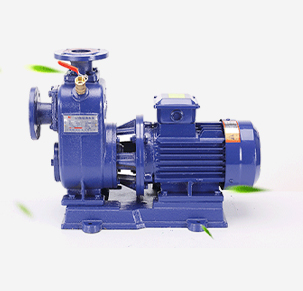English
- Afrikaans
- Albanian
- Amharic
- Arabic
- Armenian
- Azerbaijani
- Basque
- Belarusian
- Bengali
- Bosnian
- Bulgarian
- Catalan
- Cebuano
- Corsican
- Croatian
- Czech
- Danish
- Dutch
- English
- Esperanto
- Estonian
- Finnish
- French
- Frisian
- Galician
- Georgian
- German
- Greek
- Gujarati
- Haitian Creole
- hausa
- hawaiian
- Hebrew
- Hindi
- Miao
- Hungarian
- Icelandic
- igbo
- Indonesian
- irish
- Italian
- Japanese
- Javanese
- Kannada
- kazakh
- Khmer
- Rwandese
- Korean
- Kurdish
- Kyrgyz
- Lao
- Latin
- Latvian
- Lithuanian
- Luxembourgish
- Macedonian
- Malgashi
- Malay
- Malayalam
- Maltese
- Maori
- Marathi
- Mongolian
- Myanmar
- Nepali
- Norwegian
- Norwegian
- Occitan
- Pashto
- Persian
- Polish
- Portuguese
- Punjabi
- Romanian
- Russian
- Samoan
- Scottish Gaelic
- Serbian
- Sesotho
- Shona
- Sindhi
- Sinhala
- Slovak
- Slovenian
- Somali
- Spanish
- Sundanese
- Swahili
- Swedish
- Tagalog
- Tajik
- Tamil
- Tatar
- Telugu
- Thai
- Turkish
- Turkmen
- Ukrainian
- Urdu
- Uighur
- Uzbek
- Vietnamese
- Welsh
- Bantu
- Yiddish
- Yoruba
- Zulu
Telephone: +86 13120555503
Email: frank@cypump.com
Nov . 21, 2024 11:35 Back to list
slurry pump sizing
Sizing Slurry Pumps A Comprehensive Guide
When dealing with slurry transport in various industries, proper slurry pump sizing is crucial for efficient and effective operation. Slurry consists of a mixture of solid particles and liquid, making it more challenging to pump than clear fluids. Therefore, understanding the key factors in the sizing of slurry pumps ensures that the right equipment is selected for specific applications.
Understanding Slurry Characteristics
The first step in sizing a slurry pump is to analyze the properties of the slurry itself. This includes the concentration of solids, particle size distribution, and viscosity. High solid concentrations can lead to increased wear and tear on pump components, and larger particles can block impellers or damage them. As such, it's essential to select a pump that can handle the specific characteristics of the slurry being pumped.
Flow Rate Considerations
The required flow rate is a critical factor in slurry pump sizing. Flow rate is usually defined in gallons per minute (GPM) or cubic meters per hour (m³/h). It should be based on the need for efficient operation within the system. Overestimating or underestimating the flow rate can lead to pump cavitation, inefficiency, or even system failure. It's important to consult with project engineers and conduct proper calculations to establish the correct flow requirements.
slurry pump sizing

Total Dynamic Head (TDH)
Total Dynamic Head is another significant aspect of slurry pump sizing. It refers to the total height that the slurry needs to be pumped, which includes the static head and the friction head losses in the system. Accurate calculations of the TDH are necessary to ensure the pump can overcome these obstacles. Factors such as pipe diameter, length, and material also influence frictional losses and should be factored into the calculations.
Pump Selection and Design
Once the flow rate and TDH are determined, it's time to choose a pump type. Slurry pumps can be subdivided into centrifugal, positive displacement, and specific designs suited for high-solids content. Centrifugal pumps are the most commonly used due to their capacity for high flow rates and efficiency. However, in cases where the slurry contains large particles or is highly viscous, positive displacement pumps may be more appropriate.
Conclusion
In summary, sizing a slurry pump requires careful analysis of the slurry's properties, accurate calculation of flow rates and TDH, and thoughtful selection of the pump type. Neglecting any of these factors can result in inefficiencies, increased operational costs, and potential failures of the pumping system. Therefore, it is advisable to engage with manufacturers and engineering professionals during the selection process to ensure optimal performance and longevity of the slurry pump system.
-
ISG Series Pipeline Pump - Chi Yuan Pumps | High Efficiency, Durable Design
NewsAug.01,2025
-
Advanced Flue Gas Desulfurization Pump with GPT-4 Turbo | Durable & Efficient
NewsJul.31,2025
-
ISG Series Vertical Pipeline Pump - Chi Yuan Pumps | Advanced Hydraulic Design&Durable Construction
NewsJul.31,2025
-
ISG Series Vertical Pipeline Pump - Chi Yuan Pumps | Energy Efficient & Low Noise
NewsJul.31,2025
-
pipeline pump - Chi Yuan Pumps Co., LTD.|High Efficiency&Low Noise
NewsJul.31,2025
-
ISG Series Vertical Pipeline Pump - Chi Yuan Pumps Co., LTD.|High Efficiency, Energy Saving, Low Noise
NewsJul.30,2025










